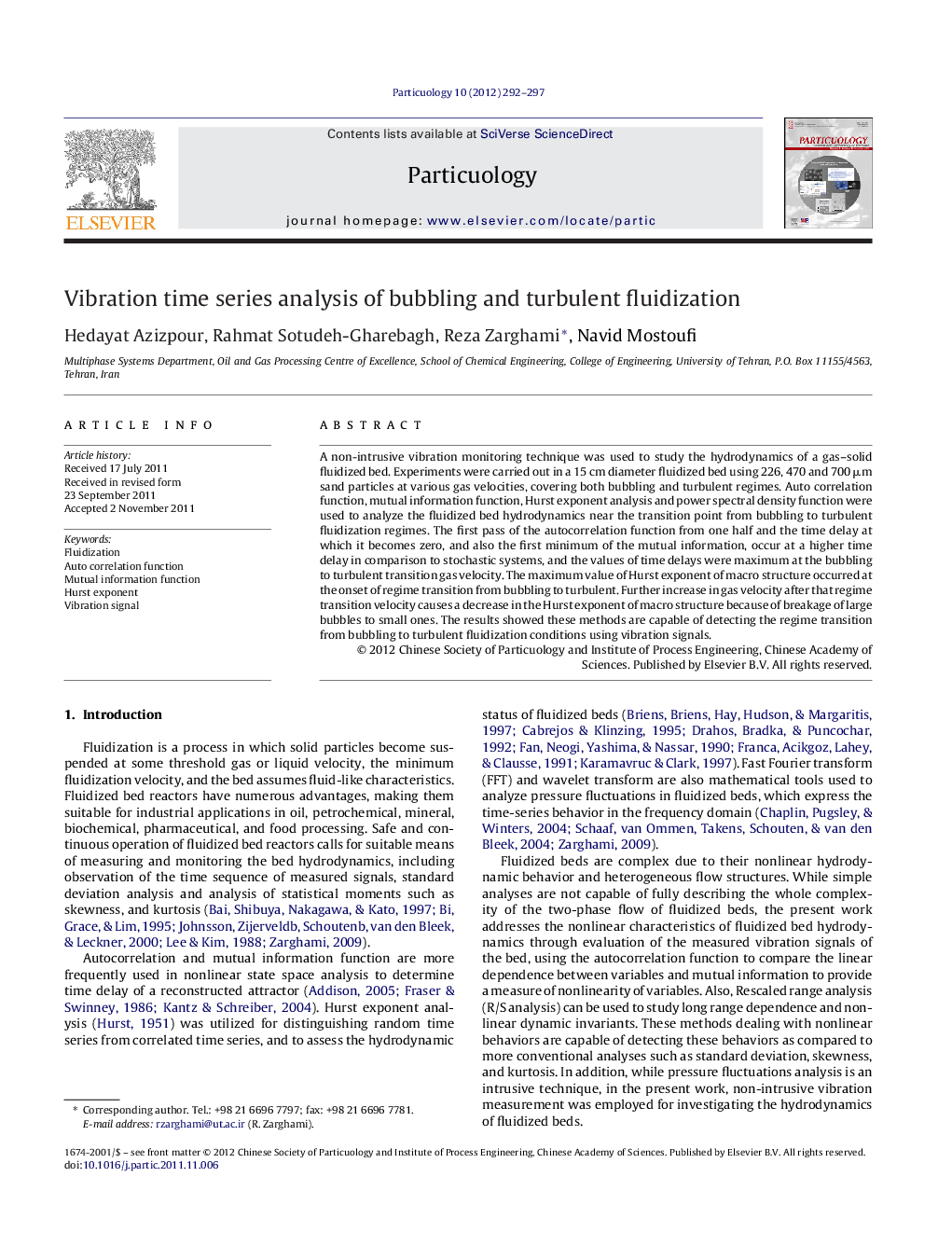| کد مقاله | کد نشریه | سال انتشار | مقاله انگلیسی | نسخه تمام متن |
|---|---|---|---|---|
| 672141 | 887487 | 2012 | 6 صفحه PDF | دانلود رایگان |

A non-intrusive vibration monitoring technique was used to study the hydrodynamics of a gas–solid fluidized bed. Experiments were carried out in a 15 cm diameter fluidized bed using 226, 470 and 700 μm sand particles at various gas velocities, covering both bubbling and turbulent regimes. Auto correlation function, mutual information function, Hurst exponent analysis and power spectral density function were used to analyze the fluidized bed hydrodynamics near the transition point from bubbling to turbulent fluidization regimes. The first pass of the autocorrelation function from one half and the time delay at which it becomes zero, and also the first minimum of the mutual information, occur at a higher time delay in comparison to stochastic systems, and the values of time delays were maximum at the bubbling to turbulent transition gas velocity. The maximum value of Hurst exponent of macro structure occurred at the onset of regime transition from bubbling to turbulent. Further increase in gas velocity after that regime transition velocity causes a decrease in the Hurst exponent of macro structure because of breakage of large bubbles to small ones. The results showed these methods are capable of detecting the regime transition from bubbling to turbulent fluidization conditions using vibration signals.
Autocorrelation function and mutual information profile against delay time.Figure optionsDownload as PowerPoint slideHighlights
► Hydrodynamics of a gas–solid fluidized bed was studied via analyzing vibration signals measured by an accelerometer.
► The maximum value of Hurst exponent of macro structure occurred at the onset of regime transition from bubbling to turbulent.
► The results showed the methods are capable of detecting the regime transition from bubbling to turbulent fluidization using vibration signals.
Journal: Particuology - Volume 10, Issue 3, June 2012, Pages 292–297